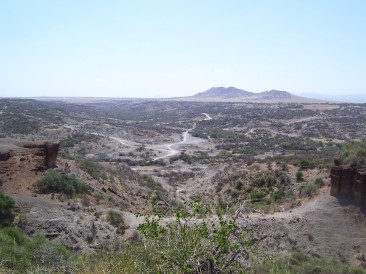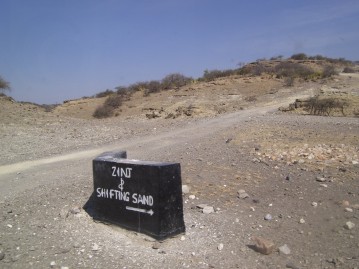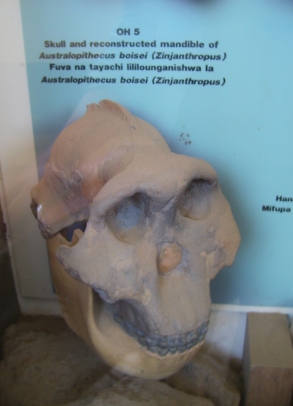[A quick note to say that I’ve recently been writing posts for the geology/education blog The Earth Story and I’m going to start cross-posting some of those pieces here, in expanded form. TES can be found on Facebook at facebook.com/theearthstory, on Tumblr at the-earth-story.com, and Twitter as @TheEarthStory. The original for the following post can be found at: https://www.facebook.com/TheEarthStory/posts/967000540027657:0]

West of the volcanic slopes of Ngorongoro Crater, which was covered in another post not long ago, there is a deep cut across the landscape that interrupts the wide Serengeti Plains in northern Tanzania. A dry, winding ravine exposes layers of lava and ash, and within them, the traces of early human evolution. Named for a European misunderstanding of the Maasai word for wild sisal flowers, oldupai, Olduvai Gorge has a rich history of paleoanthropological finds, grueling excavations, and intriguing characters.

A German expedition in 1913 found an astonishing number of fossil animal bones, and a skeleton of Homo sapiens that was estimated by the discoverers to be 150,000 years old, based on the age of the rock unit. Oldoway Man, as he was called, would have been the earliest modern human to have been found at the time, and controversy over the dating lasted decades. Later estimates put the skeleton closer to 20,000 years, with the suspiciously complete skeleton buried in a grave that had been dug into the older rock; the rock layer the bones were found in consists of lacustrine (lake related) sediments, so that if the body had been deposited at the same time as the sediments, the skeleton ought to have been broken up and separated by the water.
WWI and the ensuing rounds of “who’s got the colony” prevented further work until 1931, when Louis Leakey arrived at the site and, on his first day, found stone hand-axes, evidence of early tool-making. Though animal fossils and stone tools were abundant, it took until 1959 for the next spectacular hominid find in the gorge, when Mary Nicol Leakey uncovered fragments of a skull of an unknown species of australopithecine, a hominid genus that evolved in East Africa around 4 million years ago. She named the species Zinjanthropus boisei, though the specimen itself, which was dated to 1.75 million years (mya), was familiarly known as the Nutcracker Man for its strong jaws. Today the species is designated Paranthropus or Australopithecus boisei.

Beyond the individual finds, Olduvai Gorge is remarkable for capturing the sequence of hominid occupation that unfolds there. The gorge cuts through deposits from an ancient lake, interrupted by periodic volcanic deposits; the lake provided a hospitable habitat for hominid development combined with easily datable volcanic rocks. Before Paranthropus, the site was home to Homo habilis (“handy man”), a species that was also first identified at Olduvai and named after the stone tools found in the gorge. Homo habilis is dated at the site from 1.9 mya, with Paranthropus overlapping from 1.8 to 1.2 mya. Another hominid species, Homo erectus, occupied the area from 1.2 to 0.7 mya, followed by Homo sapiens approximately 17,000 years ago.

Olduvai Gorge continues to reveal secrets about early human evolution – excavations are ongoing, and modern research also focuses on using geology and geophysical techniques to take a more big-picture view of the gorge. The Olduvai Landscape Paleoanthropology Project takes a “landscape” approach to look at wider population-scale patterns by reconstructing the ecosystem of the lake basin and identifying locations (springs, streams, etc) where hominid populations may have clustered and remains may be found. There is a wealth of information that can be uncovered from not just the bones themselves but the valley that holds them; one dry lake bed and one dusty gorge have allowed us to explore 2 million years of our own history as the family Hominidae.
